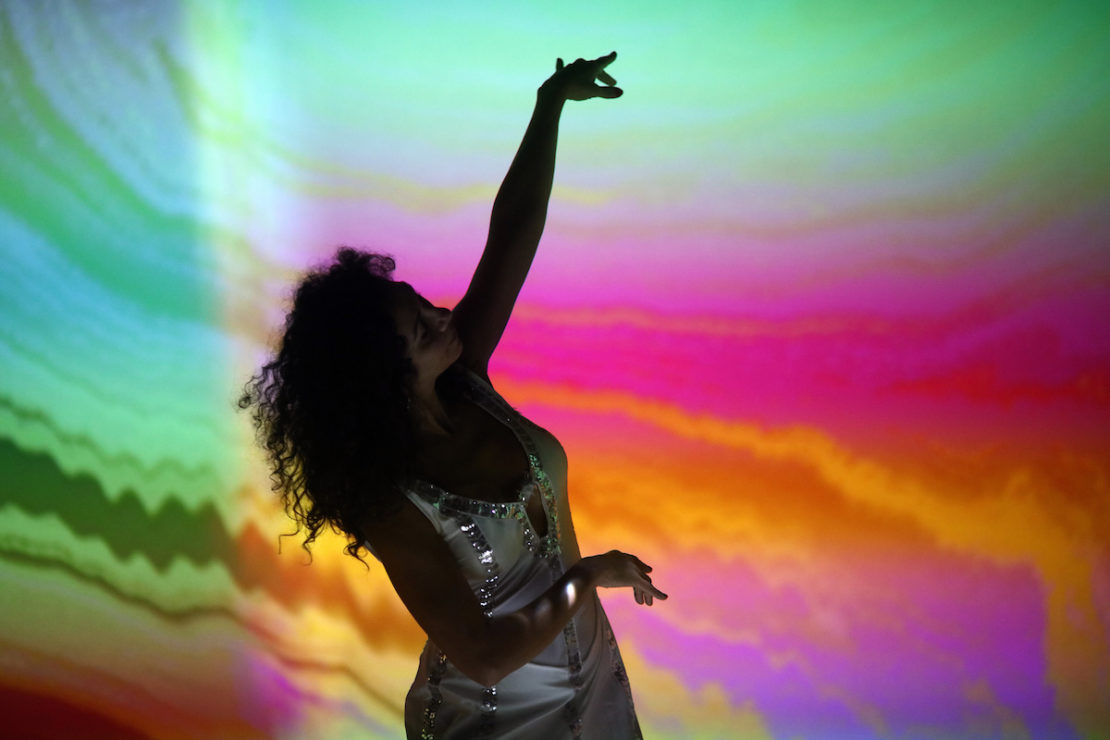
Is this the way they say the future's meant to feel?
About 10 minutes after walking into Tobacco Dock, in east London, for this assignment, I ran into a former journalist colleague, who long ago quit the stasis of the arts desk for a career in trend forecasting. "What you doing at a FutureFest?" he asked, without saying hello. Then came the kicker: "I thought you were the past?"
Irritated though I was by this, he had a point. As a dead tree press arts hack, I couldn't feel less of an anachronism if I was wearing an Elizabethan ruff and a codpiece. Perversely, this (the obsolescence of the print media, not the codpiece) makes me think a lot about the future. And boy does it scare me.
Without sounding too wonky about it, I guess my understanding of the future as a cultural proposition – or, as we might reasonably call it, 'The Future' – is similar to that of most Luddites. The Future of my lazy imagination is a schizophrenic place, riven between Buckminster Fuller's vision of utopian communitarianism and Orwell's dystopia. Without mentioning the sell-by date of these particular references, one tends to envisage what lies ahead as a Manichaean confrontation between splendour and fear, terrifying and glorious in equal measure.
Sign up to our newsletter
What we don't think about, though, is how bloody confusing it will be. Now, having attended Long + Short publisher Nesta's third festival exploring the topic, I can tell my fellow neophytes that I have seen The Future – and I'm baffled.
For me, FutureFest was initially what that peerless augur of events-to-come Donald Rumsfeld might have described as an 'unknown unknown': I entered in a daze, unsure what I was meant to be looking at or indeed what it was supposed to prove to me.
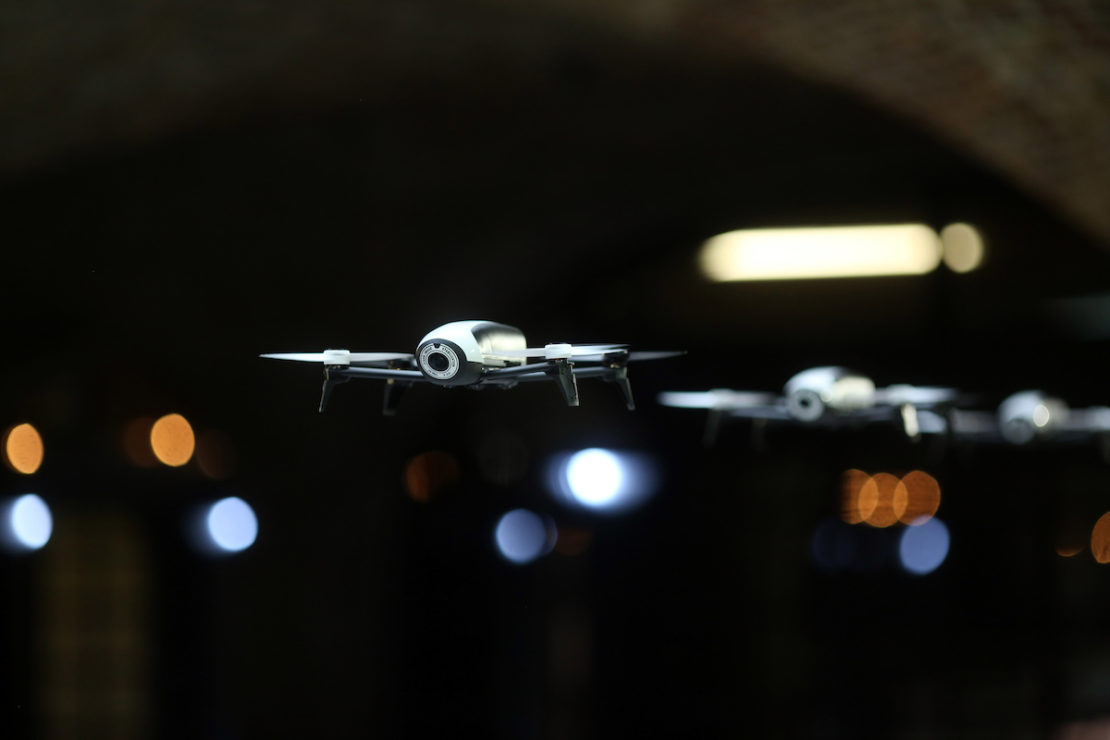
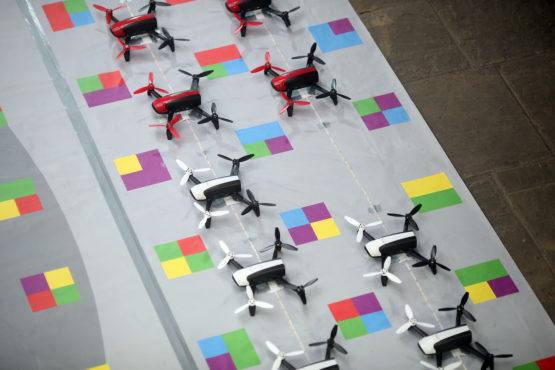
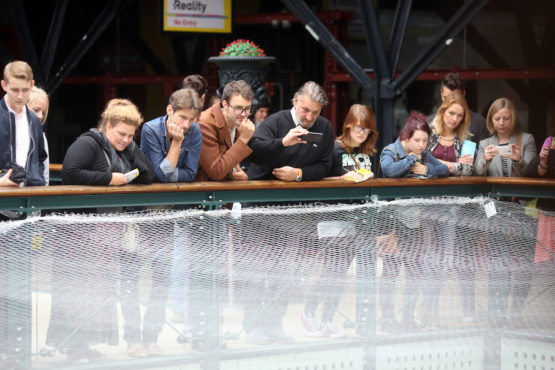
Every inch of the steppe-like floorspace of the venue had been made use of. Without knowing quite what I was supposed to be doing, I walked into a throng of cooing bystanders gathered around an internal balcony as high classical music set to a disco beat boomed from a sound system I couldn't see. Nudging my way to the edge, I looked down to see a squadron of drones performing a dance in time to the soundtrack (pictured above). Cute.
The music cut out and the improbably lithe wee machines shuttled back to their launchpads. The audience hesitated for a moment: it suddenly struck me that nobody knew what the etiquette was for applauding robot aircraft. After several, painful seconds, magnanimity won out: the drones received the sort of crowd adulation normally reserved for fanclub-only Bruce Springsteen gigs.
Most read
What happened to maglev? How radical life extension will transform punishment Can you run a government on the blockchain?I turned away to explore something else, and came face to face with two ladies with a single blue line smudged beneath their right eye.
"Would you like to experience the makeover of the future?" one asked.
I hesitated before saying no. Perhaps it was just me, but they looked rather put out by this. Pained though I was, I'm afraid that due to a general reluctance to spend my Saturdays walking round east London looking like an extra from The Fifth Element, I held firm.
By this point, I was longing for the comparative certainty of contemporary art criticism. A press officer noticed my distress and directed me to one of the booths showcasing technological art installations that were dotted round the space. I walked in to find a TV monitor displaying three faces babbling away in a language I didn't understand, while a team of students from the Finnish Institute in London huddled around a small plinth.
Moving closer, I noticed that they were intently watching one of their peers rub a small mound of what looked like Vaseline with a device connected to a wire. One explained to me that this was a special mound of jelly implanted with mould. The jelly was supposed to act as a kind of 'brain' for the three avatars I'd seen on the TV monitor – Molding the Signifier, as per the installation's title; as the mould cells multiply, these avatars become increasingly deranged, morphing from delicate nymphs into screaming harpies.
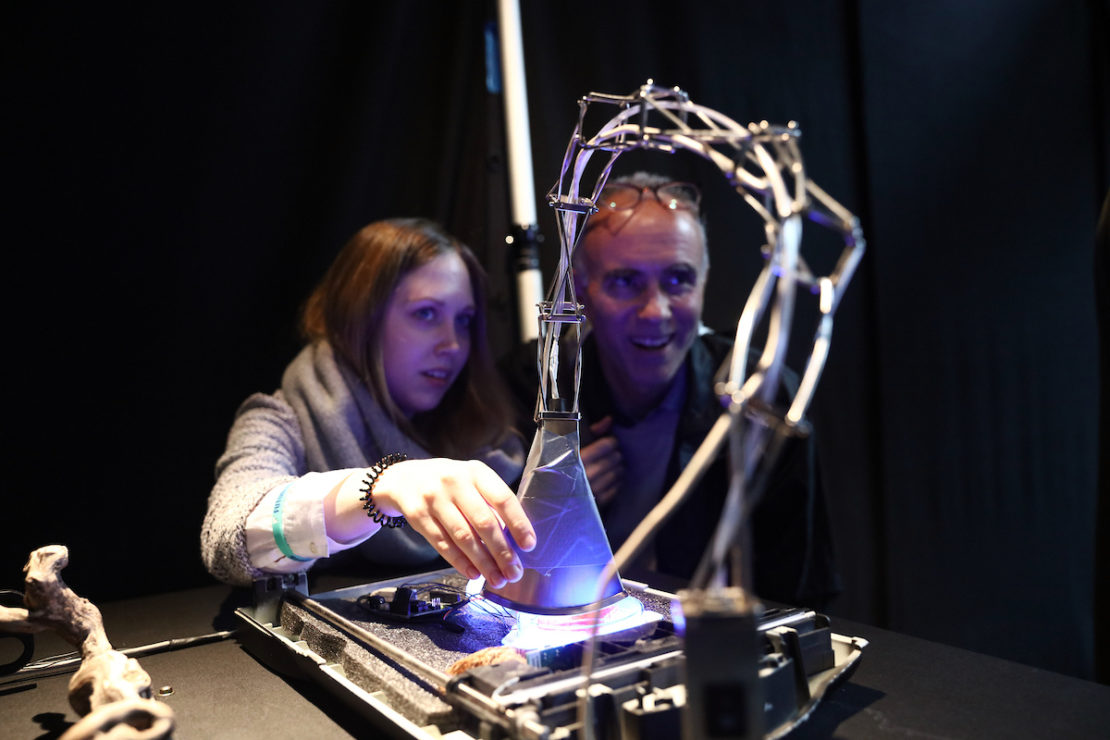
Fascinating. I'd seen no end of supposedly radical, tech-themed art, but never before had I encountered anything that brought living, biological organisms into direct, corrosive contact with virtual reality. I realised I had seen something that might have truly radical consequences – not just for art, but for everything.
Next, I headed into an all day performance titled Collective Reality. The spectacle, in which visitors are invited to participate, was a similarly disorientating experience.
Against a backdrop of fiery visuals that surrounded the entire room, a dancer in faux-Babylonian garb who really did look like an extra from The Fifth Element played out a shamanistic ritual that seemed not a million miles from the kind of thing you might have seen accompanying Slade on a 1970s Top of the Pops appearance. Oddly, the spectacle was utterly hypnotic, not least because I had no context beside my dated pop culture references in which to place it. She shimmied out, and so did I, on a blissfully ignorant high.
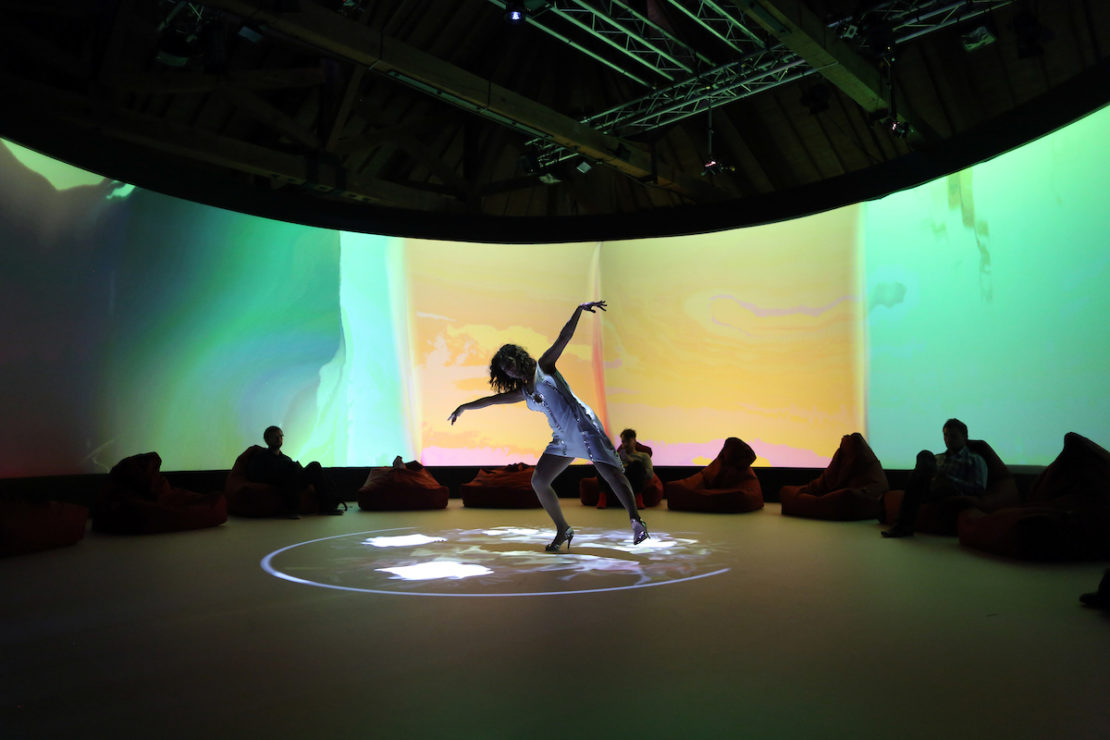
Unsold by Shu Lea Cheang's talk on Viral Love – which to me sounds like something you should probably visit a clinic for – I headed to the Coming Out experience, a VR extravaganza created in collaboration with Camden's Roundhouse Radio. This, it was explained to me, might well change the way we go about meeting potential sexual partners.
I stuck a pair of headphones in my ears and was told to select one of three 'dates' on a special smartphone. Fumbling, I fudged my finger on a button and a warm but pre-recorded female voiced greeted me through the headset. She seemed to know exactly where I was standing and, when I began to shift slightly, she teased me for it. Paranoia kicked in: was this ostensibly friendly voice spying on me?
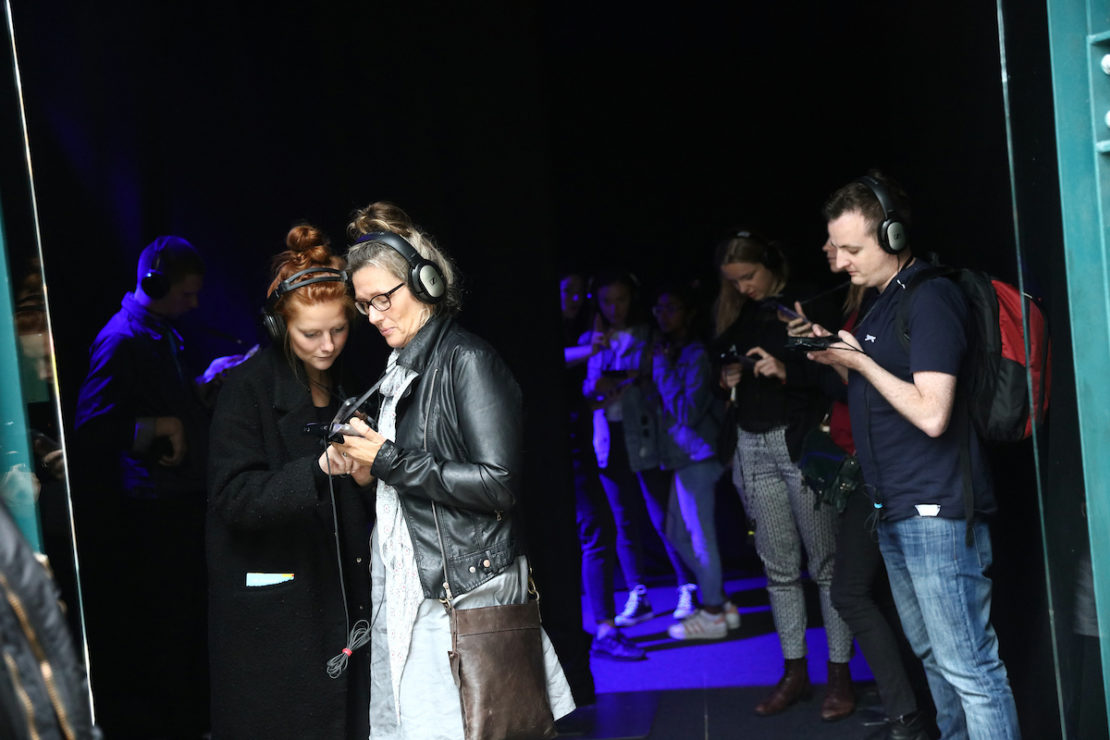
She led me round the venue, explaining the point of the experience and – just to send my more prudish tendencies into overdrive – how to boost my sexual confidence. She guided me to a bar, where I failed to secure a free drink, then introduced me to a total stranger who told me in no uncertain terms where to get off. I was getting pretty irritated with her when she led me slap bang into my friend Jack.
For a moment, I genuinely believed technology had locked me into some benign version of the Truman Show. Jack, however, said he'd noticed me across the room and that he was off to the pub. My 'guide' invited me to complete the experience with a one-man dance-off. I declined.
In the circumstances, though, I came off pretty well. My ex-journo colleague told me that he'd tried out the experience, the voice over his headset had taken him to the toilets, where she demanded they engage in a ceremony of mutual masturbation. It was, apparently, 'pretty graphic'.
I rounded off the day with a talk by a bunch of foodies about the "future of eating out". It seems Pizza Express has little to fear. From what I gathered, the restaurant of tomorrow will – thank god – be remarkably similar to the one of today.
I wandered out into the wilds of Wapping slightly shell-shocked. I genuinely don't believe I've ever taken in so much information in such a short time, and for all that it did my head in, I don't think I've ever learned so much about the likely nature of day to day life in the near future. Rather than splendour and fear, it seems, we're in for something altogether weirder.